Event Registration
Single gold nanoparticle-based platform to induce liquid flow conveying colloids
Shuichi Hashimoto
Advanced Engineering Courses, NIT Gunma College, Maebashi, Japan
Optical manipulation techniques have been extensively/intensively applied to move, assemble and sort colloids remotely and in a dynamically reconfigurable way. In particular, optical radiation pressure widely known as optical tweezers has versatility in applications ranging from nanoparticles to protein molecules and biological cells [1,2]. The radiation
pressure, however, has suffered from limitations: the magnitude of force is only ~pN which is rather small to grab firmly; the range of force is limited to the illuminated area. To overcome these limits, conveying particles and molecules along the liquid flow to the desired direction is promising. When the liquid-liquid interface of immiscible fluids is heated locally, thermocapillary stress is generated and this stress drives the liquid flow. The thermocapillary force is associated with the temperature dependence of the interfacial tension between the two liquids and results in an interfacial flow, directed toward the area of largest interfacial tension [3].
Recently, we have implemented a platform consisting of a single gold nanoparticle (Au NP) that was immobilized on a substrate and heated by a focused laser beam, and a solution that can undergo temperature-induced phase separation. When a Au NP (d=100 nm) on a glass substrate was illuminated by a 532-nm laser light through an objective lens (numerical aperture, NA of 0.70) in aqueous 2,6-lutidine solution (20-28 %w/w), phase separation occurred only at the heated area around the Au NP. The thermocapillary stress was generated at the liquid-liquid interface between the lutidine-rich droplet (immediately next to the particle) and water-rich bulk. As a result, liquid flow was observed by dispersing tracer particles such as polystyrene (PS) spheres of 0.5 to 2 μm in diameter [4].
In the absence of the phase separation (without laser illumination, Figure 1), thermal Brownian motions of suspended particles occurred. On laser illumination of a fixed Au NP, however, the phase separation sets in, resulting in the movement of suspended particles (60-nm Ag NPs in Figure 2) towards the heating center. The Ag NPs were trapped at the lutidine-rich area (Figure 2). Contrastingly, when Au NPs of a greater diameter, 100 nm, was suspended, these particles were at first attracted to the heated area (phase separated area) but bounced back as a ping-pong ball (Figure 3). Such phenomena were observed at higher laser intensities. The detailed accounts will be given on site.
1 – Trajectories of three (with different colors) aqueous 100-nm Au NPs, exhibiting thermal Brownian motions, without laser illumination of a fixed Au NP. 2 – Upon illumination (l2 mW) on a fixed Au NP, 60-nm Ag NPs dispersed in aqueous lutidine solution were attracted to the hot center and trapped (trajectories are shown for four particles). 3 – Under illumination of 532-nm laser (2.9 mW) on a fixed Au NP, 100-nm Au NPs dispersed in aqueous lutidine solution were attracted to the heated center and repelled (trajectories are shown for five particles). The imaged area: 20 μm × 20 μm.
References:
[1] P. Zemanke et al., Adv Optics Photonics, 28, 63 (2019).
[2] D. Gao et al., Light Sci & Appl., 6, e17039 (2017).
[3] J-P. Delville et al., J. Opt. A, 11, 034015 (2009).
[4] I. Aibara et al. J Phys Chem C, 124, 2427-2438 (2020).

© 2024 · Biophotonics4Future
Leibniz Institute of Photonic Technology
Albert-Einstein-Str. 9
07745 Jena | Germany
www.leibniz-ipht.de






